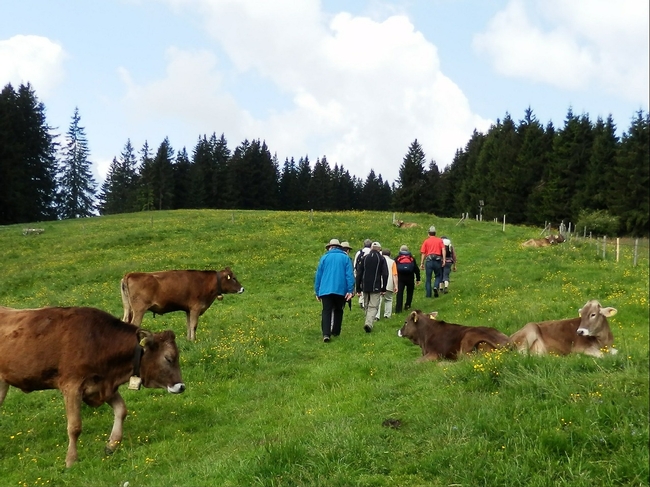People and cattle can share open space
When a hiker on a San Francisco Bay Area parkland unknowingly walked between a cow and her calf, the mother came over, knocked the hiker down and stepped on him. In another incident, a woman walking her dogs off leash was chased by cows. She slipped and sprained an ankle.
Such incidents, though rare, prompted UC Agriculture and Natural Resources (UC ANR) experts to write guidelines for people who hike, cycle or ride horses in natural areas where grazing cattle are used to manage the land. The four-page publication, Sharing Open Space: What to Expect from Grazing Livestock, is available for free download from the UC ANR online catalog.
“Areas that were traditionally rangelands, especially in urban counties, are more and more often becoming parklands,” said Stephanie Larson, UC ANR Cooperative Extension livestock advisor in Sonoma County and lead author of the publication. “State parks generally remove grazing, but we didn't want to see that at regional and county parks.”
Cattle grazing can provide important services to these working landscapes, like managing the vegetation, reducing fire hazards, increasing water capture, and promoting the diversity of plant. With education, Larson believes, people who hike, bike and horseback ride can coexist peacefully with the cattle.
Cattle may seem intimidating because of their size, but they are vulnerable to attack by coyotes and other predators. As prey animals, cows naturally experience and express fear and protective behavior, especially when unfamiliar people and animals are near and to protect their young.
Cattle can feel threatened by dogs, which they will perceive as predators. The guidelines recommend keeping dogs close and under complete control at all times. Just like people, dogs should never get between a cow and her calf.
The guidelines detail typical cattle posture when relaxed and when agitated, their response to intrusions into their personal space (or “flight zone”), and reactions to loud noises.
“Unless you need to move cattle out of your way, such as move them off a narrow trail, it's best to give them plenty of space and avoid their flight zone altogether,” the guidelines advise.
Injured cattle should be reported and left alone. The guidelines suggest people never approach a cow from behind, make quick movements or flap their arms, or try to “rescue” calves that seem to be separated from their mothers.
“The mother may be off drinking or eating, and will return to the baby,” the authors write. “She may even be watching you.”
Co-authors of the guidelines with Larson are Sheila Barry, UC ANR livestock and natural resources advisor in the Bay Area, and rangeland management consultant Lisa Bush.
An initiative to maintain and enhance sustainable natural ecosystems is part of UC Agriculture and Natural Resources Strategic Vision 2025.


Posted by Anne on May 8, 2015 at 8:17 AM